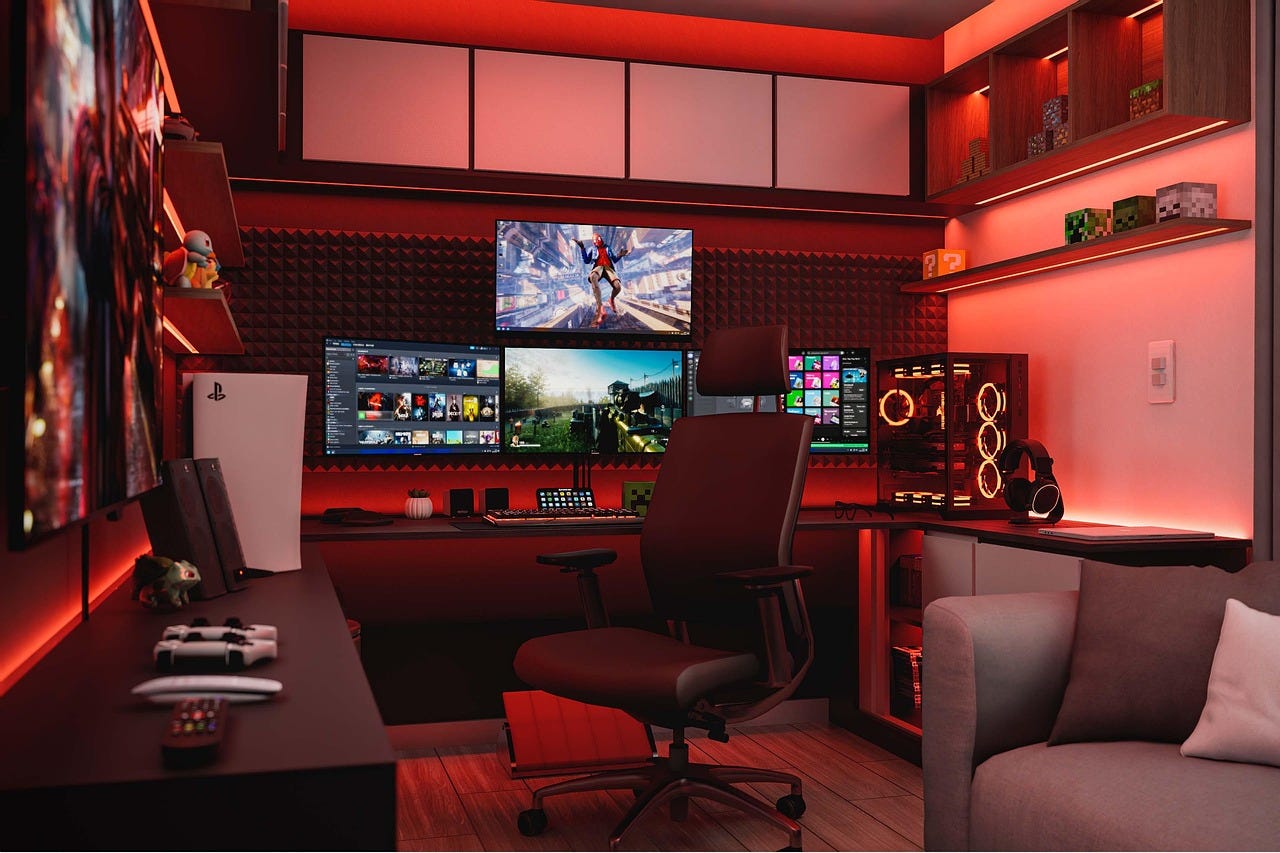Introduction: Why Performance Matters More Than Ever
Whether you’re a gamer, content creator, designer, or business professional, your desktop PC’s performance plays a critical role in how productive, efficient, and smooth your experience is.
In 2025, with demanding applications, 4K+ content, and complex multitasking becoming the norm, choosing a desktop PC isn’t just about “more RAM” or “a better graphics card.” It’s about understanding the essential performance features that define a powerful modern system.
Let’s explore the top performance features you should prioritize when choosing or building your next desktop PC.

1. Multi-Core, Multi-Threaded Processor (CPU)
The CPU is the brain of your PC. Modern tasks require parallel processing power that single-core chips just can’t provide.
What to look for:
- CPUs with 6 cores or more (e.g., Intel Core i5/i7/i9, AMD Ryzen 5/7/9)
- Multithreading or Hyperthreading for parallel task handling
- High base and boost clock speeds (e.g., 3.5 GHz and above)
- Latest architectures (Intel 14th Gen, AMD Ryzen 7000 series)
Why it matters:
Whether you’re gaming, streaming, editing, or running simulations, a powerful multi-core processor ensures smooth multitasking and faster execution.
2. Dedicated Graphics Card (GPU)
For gaming, video editing, 3D modeling, or AI work, a robust GPU is essential.
What to look for:
- Minimum 8GB VRAM (preferably GDDR6)
- NVIDIA RTX 3060/4060 or higher; AMD RX 6600/7600 or higher
- CUDA/RT/Tensor cores for creative workloads and AI tools
- Multi-monitor and high refresh rate support
Why it matters:
A high-end GPU isn’t just about gaming—it significantly speeds up creative workflows, graphical simulations, and high-res rendering.
3. Fast and Ample RAM
Memory allows your PC to multitask. For modern software, 8GB isn’t enough anymore.
What to look for:
- 16GB to 64GB of DDR4/DDR5 RAM (depending on use case)
- High-speed RAM (e.g., 3200MHz+ for DDR4, 5600MHz+ for DDR5)
- Dual-channel or quad-channel configurations
Why it matters:
More and faster RAM enables fluid multitasking, better caching, and smoother performance in software like After Effects, AutoCAD, and Chrome with many tabs.
4. NVMe Solid-State Drive (SSD)
Traditional hard drives (HDDs) are obsolete for primary use. SSDs are a must.
What to look for:
- NVMe SSDs (PCIe Gen 3 or Gen 4) with read/write speeds over 2500MB/s
- Minimum 500GB capacity, with room for OS, apps, and media
- Secondary drives (SATA SSD or HDD) for mass storage
Why it matters:
Fast SSDs drastically reduce boot times, app launches, project loading, and even in-game load times—everything feels snappier.
5. High-Efficiency Power Supply Unit (PSU)
Your PC is only as reliable as its power source.
What to look for:
- 80+ Bronze, Silver, Gold or Platinum certification
- Modular or semi-modular for cable management
- Wattage based on your build (generally 550W to 850W for most setups)
Why it matters:
A quality PSU protects your components, ensures power stability, and supports future GPU/CPU upgrades.
6. Motherboard with Future-Proof Features
The motherboard determines compatibility, expandability, and upgrade potential.
What to look for:
- Support for latest CPU generations (LGA1700, AM5)
- DDR5 and PCIe Gen 4/5 support
- Multiple M.2 NVMe slots
- USB-C, Wi-Fi 6E, Bluetooth 5.2, and Thunderbolt support
Why it matters:
A future-ready motherboard ensures long-term use, better connectivity, and fewer upgrade headaches.
7. Advanced Cooling System
Heat is the enemy of performance. Poor cooling = thermal throttling.
What to look for:
- Air cooling with high-CFM fans or liquid cooling for overclocked systems
- Proper case ventilation and airflow direction
- Case dust filters, mesh panels, and silent operation fans
Why it matters:
Good thermal design ensures your components run cooler, quieter, and longer, even under heavy loads.
8. High-Refresh-Rate Monitor Support
The GPU isn’t enough if the monitor can’t keep up.
What to look for:
- Monitor refresh rates above 60Hz (120Hz/144Hz/240Hz for gaming)
- Support for FreeSync or G-SYNC
- 4K resolution for creators, 1080p/1440p for competitive gamers
Why it matters:
Combining a strong GPU with the right monitor unlocks a buttery-smooth visual experience, reducing lag and eye strain.
9. Expandability & Upgrade Paths
Your PC should grow with you.
What to look for:
- Extra RAM slots and PCIe lanes
- Support for multiple drives (NVMe + SATA)
- Spare USB headers, fan slots, and GPU clearance
- Larger cabinet with cable routing features
Why it matters:
You’ll save money in the long run by upgrading, not replacing, your entire system.
10. Operating System & Software Optimization
Don’t overlook the software side.
What to look for:
- Windows 11 or Linux optimized for multi-core and high-res
- Drivers that support your exact GPU/CPU
- Performance tuning tools like MSI Afterburner or AMD Adrenalin

Why it matters:
Even the best hardware can be bottlenecked without the right OS optimization and software setup.
Conclusion: Build for What You Do, But Don’t Skimp on the Core
Choosing a powerful desktop PC isn’t about blindly picking the most expensive components. It’s about balancing performance features that suit your specific workflow—be it gaming, editing, designing, or developing.
Keep your focus on:
- CPU + GPU synergy
- RAM and SSD speed
- Cooling and upgrade potential
And most importantly, get a build that you can grow into, not grow out of.